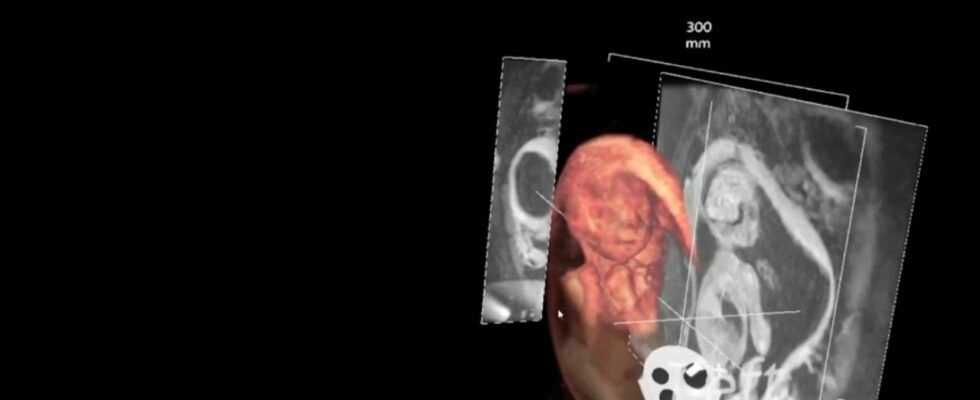RESEARCH – The Necker – Enfants Malades hospital has created the LUMIÈRE platform, a research center which allows the fetus to be observed in 4D and thus to identify and treat certain diseases before birth. A considerable medical advance.
Léa Tintillier | Report C. Bayle, JF Drouillet –
The Necker Hospital – Enfants Malades has an integrated platform for clinical research and teaching in medical imaging of pregnant women, the fetus and the placenta. This research center, called LUMIÈRE, aims to ensure better monitoring of pregnancy and the unborn child, but also to understand, identify and treat certain diseases even before birth.
All the info on
That day, Morgann, five months pregnant, came to participate in the experience. “Being already the mother of a little four-year-old boy, we are necessarily touched by this kind of subject. It’s just a little bit of time and I think it can help advance so I’m delighted”, she testifies in the TF1 20H report at the top of this article.
The program starts with an ultrasound, but it is nothing classic. The examination is indeed more thorough thanks to the latest imaging tools. Morgann and the sonographer thus discover the baby in 4D. “So that interests us a lot. Not just to please the parents. There are anomalies in the face that can be found so it can guide us on certain pathologies”, explains Dr Jean-Philippe Bault in front of the screen.
An ultrasound to look at the placenta
For the first time, the device makes it possible to capture the vascularization of the brain or the functioning of the placenta, an essential organ. “This is where the exchanges take place, this is where these exchanges go badly, sometimes, which leads to stunted growth. This is an important line of research and it will certainly be a path of the future to consider treatments for these fetuses who have difficulty growing “, continues the sonographer.
But ultrasound alone cannot see everything. Morgann’s examination continues in the MRI room, which is safe for the mother-to-be and the baby, but more sporty for the medical team. “We have two people to manage: first the mother with her comfort, but also the baby, who is in a large swimming pool. So we are kind of obliged to run after him”, smiles Charline Henry, research engineer.
On the screens, the fetus is discovered in its entirety and in motion. The session can last 40 to 50 minutes. Morgann can then discover a video of her baby, who has not stopped wriggling. “It allows us to understand a little better what is happening inside because ultimately for us who are not doctors, it still remains a great mystery. I could show him all that, it’s brilliant”, rejoices the future mother.
“Treat the fetus before it becomes a sick child”
During this time, the images collected and then reworked provide valuable clues to researchers, who in particular observe brain fibers never seen from this angle. “In some malformations, we are not able to tell if the fibers are present or if they are disorganized”, says Dr David Grevent, pediatrician.
Read also
- Medical feat in Angers: doctors save a fetus whose legs came out of its mother’s uterus
- Fetus operated on: understand everything about this medical first
The prospects for understanding diseases and treatments offered by this technology are dizzying for birth specialists. “This fetus, usually, you can’t examine it, you can’t see it, you can’t touch it, you can’t auscultate it. Ultrasound and MRI as they are done here at LUMIÈRE finally allows us to approach this fetus and to be able to hope to better treat it before it becomes a sick child “, concludes Professor Laurent Salomon, co-director of the foundation.
To date, more than 300 women have already contributed to this very precious image bank for the medical team, and doctors are still looking for volunteers.
On the same subject
The most read articles
LIVE – Vaccine pass: the measure adopted by the end of January, hopes the government
Covid-19: the order of appearance of symptoms would be different depending on the variant contracted, according to a study
VIDEO – Street harassment: a 20-year-old woman from Rouen invents “the turkey technique”, watch
RELIVE – Handball World Cup – France-Norway (22-29): Les Bleues lose in the final
Incarcerated in Paris, Claude Guéant pays all of his debt to the public treasury and asks to be released

